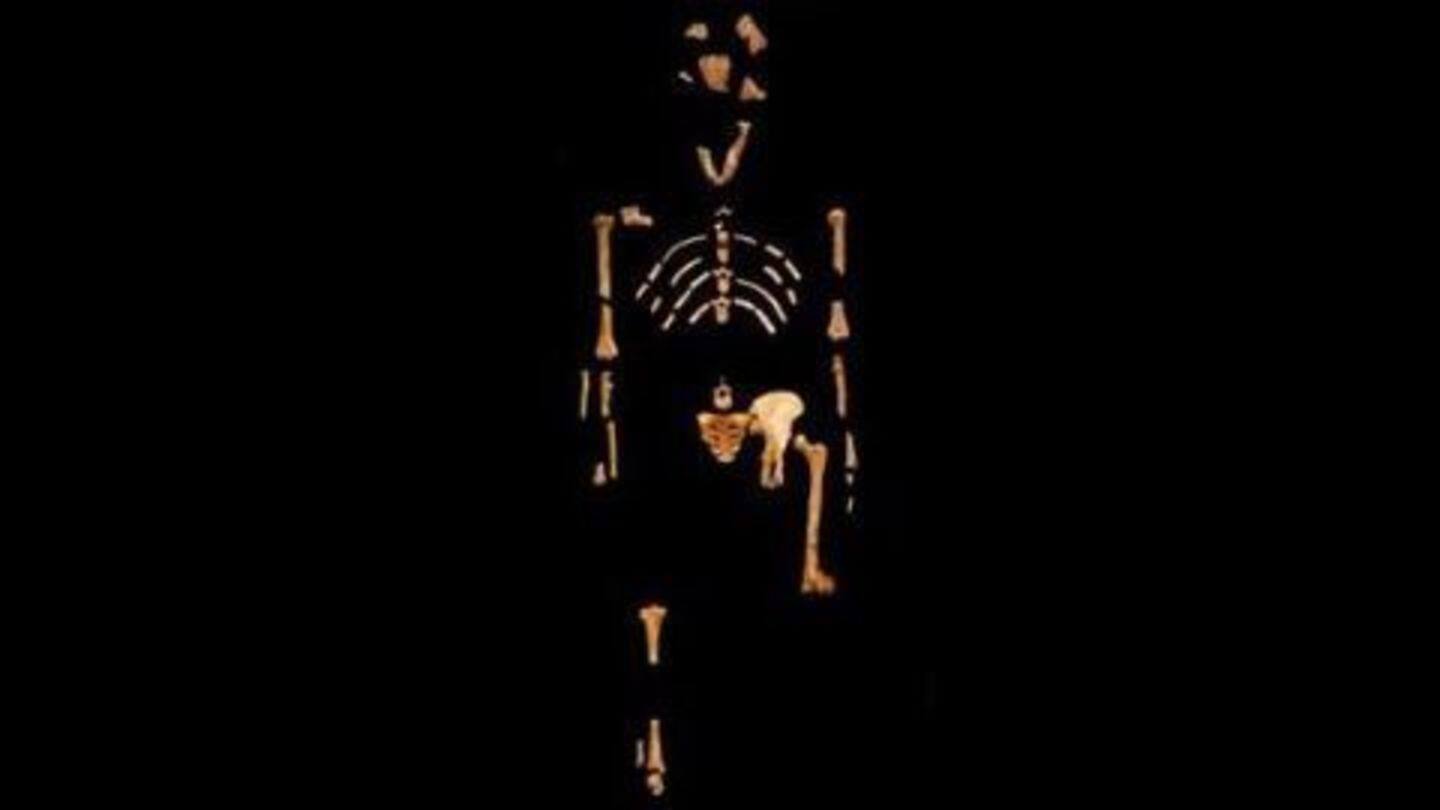
Google Doodle honors Lucy- the Australopithecus
What's the story
Today's Google Doodle marks the discovery of Lucy, a skeleton found 41 years ago in Ethiopia. The doodle shows an Australopithecus afarensis (an extinct ape) walking between a chimpanzee and a human, marking the transition between the two species. Lucy had helped the scientists understand the evolution of apes into bipedal humans. It belonged to a species that shared both human and ape characteristics.
Introduction
Who is Lucy the Australopithecus?
Lucy was the name given to a collection of fossilised bones that once made up the skeleton of a hominid (ape) from the Australopithecus afarensis species. At the time of discovery, 40% of Lucy's skeleton was found intact rather than incomplete and damaged fossils. It lived about 3.2 million years ago in Ethiopia and was discovered in 1973 by paleoanthropologist Donald Johanson
Name
The story behind the name Lucy
After discovering the skeleton, paleoanthropologist Donald Johanson thought of listening to a song back at his campsite. He had put a Beatles cassette in the tape player and the song "Lucy in the Sky with Diamonds" played. One of the people in his group suggested that the skeleton should be called Lucy. Donald told BBC that suddenly she was a person to them.
Facts
Discovered facts about Lucy
Scientists discovered that Lucy spent most of her time walking on two legs- a striking human-like trait. It was not clear how she had died; however, there was one tooth mark from a carnivore on the top of her left pubic bone. She had died as a young but fully grown adult whose height was only 3.7 feet and weighed just 29 Kg.
Criticism
Criticism about Lucy's sex
Historian of science Londa Schiebinger questioned the claims that Johanson's team made about Lucy's gender. Johanson's team had written that the pelvic opening in hominids had to be proportionately larger in females than in males to allow for the birth of larger-brained infants. Londa Schiebinger argued that Lucy's sex could not be determined by the size of the skeleton.
Personal
Where is Lucy now?
The skeleton of Lucy currently lies hidden away from the public in a specially-constructed safe in the National Museum of Ethiopia in Addis Ababa. Only a plaster replica of her skeleton is available to be seen by the public.